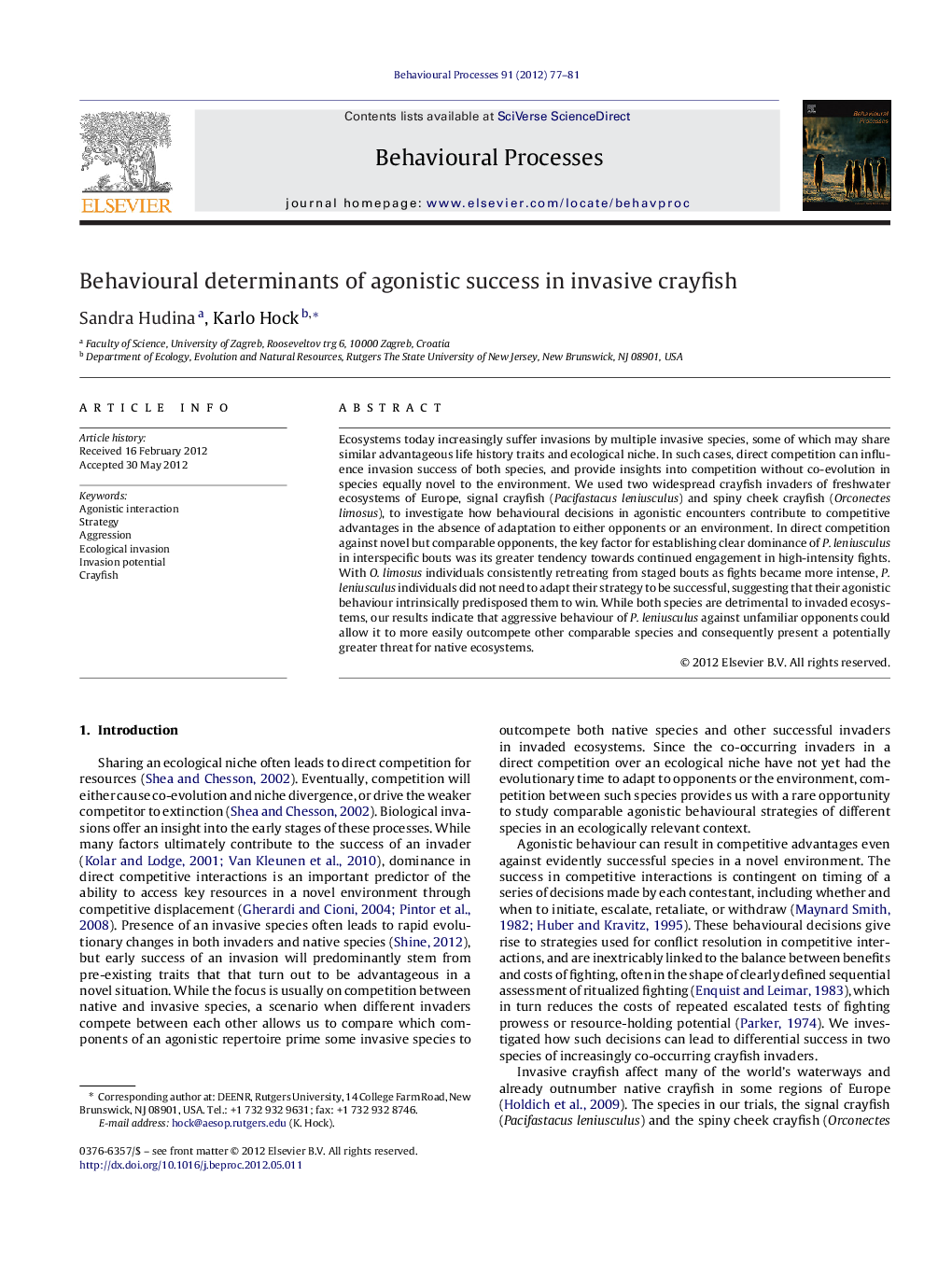| Article ID | Journal | Published Year | Pages | File Type |
|---|---|---|---|---|
| 2426932 | Behavioural Processes | 2012 | 5 Pages |
Ecosystems today increasingly suffer invasions by multiple invasive species, some of which may share similar advantageous life history traits and ecological niche. In such cases, direct competition can influence invasion success of both species, and provide insights into competition without co-evolution in species equally novel to the environment. We used two widespread crayfish invaders of freshwater ecosystems of Europe, signal crayfish (Pacifastacus leniusculus) and spiny cheek crayfish (Orconectes limosus), to investigate how behavioural decisions in agonistic encounters contribute to competitive advantages in the absence of adaptation to either opponents or an environment. In direct competition against novel but comparable opponents, the key factor for establishing clear dominance of P. leniusculus in interspecific bouts was its greater tendency towards continued engagement in high-intensity fights. With O. limosus individuals consistently retreating from staged bouts as fights became more intense, P. leniusculus individuals did not need to adapt their strategy to be successful, suggesting that their agonistic behaviour intrinsically predisposed them to win. While both species are detrimental to invaded ecosystems, our results indicate that aggressive behaviour of P. leniusculus against unfamiliar opponents could allow it to more easily outcompete other comparable species and consequently present a potentially greater threat for native ecosystems.
► Signal crayfish establishes clear dominance in fights over spiny cheek crayfish. ► Persistent participation in escalated fights underlies this lopsided outcome. ► This behaviour gives intrinsic advantages in interspecific bouts and invasiveness. ► Behavioural interactions help us predict ecological effects of multiple invaders. ► Inter-invader interactions can help inform control and conservation efforts.
